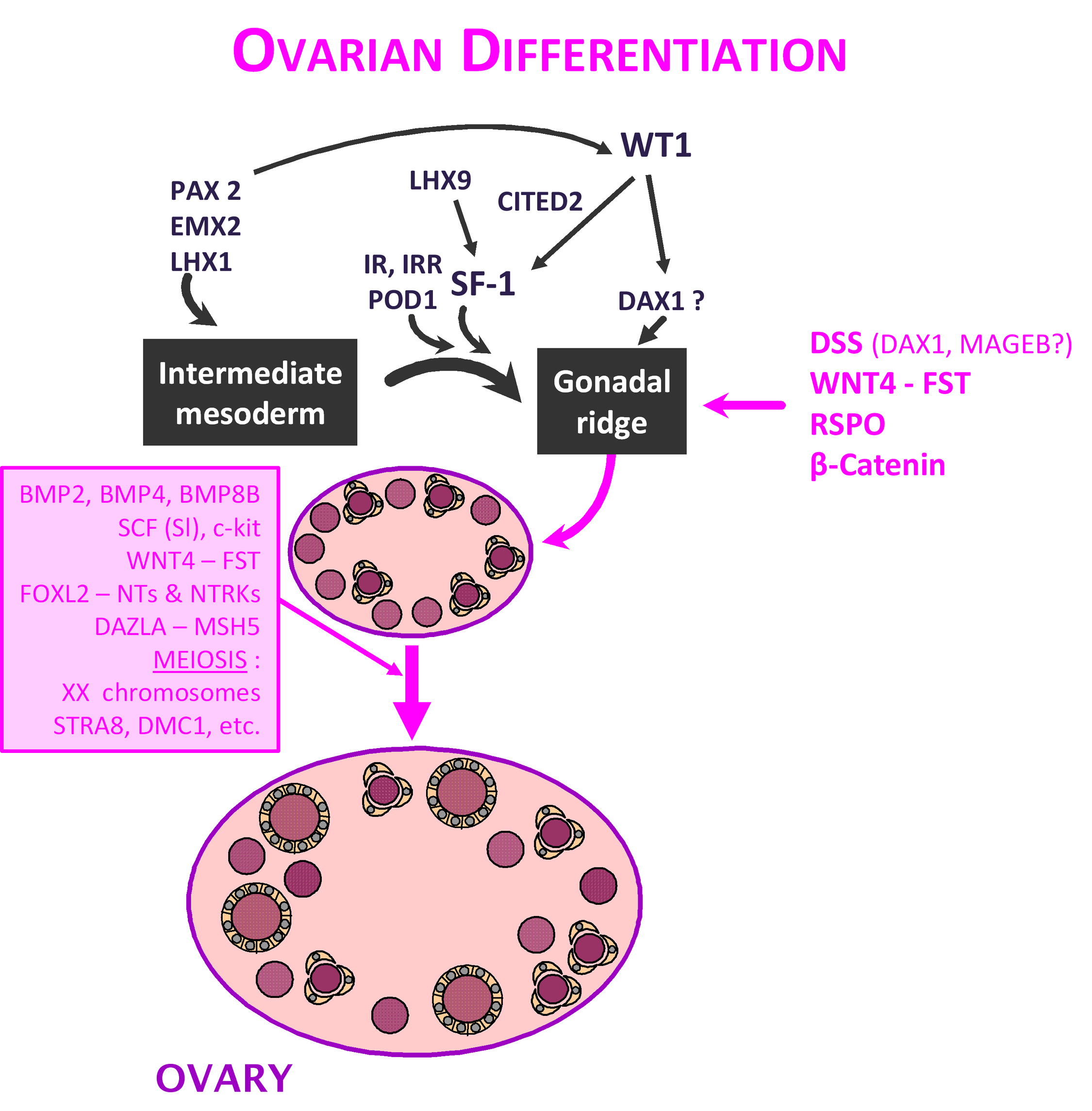
Figure 8. Ovarian differentiation. Like in the male, general transcription factors, as LHX1, EMX2 and PAX2, are necessary for intermediate mesoderm development. The gonadal ridge differentiates from the intermediate mesod erm following the action of SF1, which is regulated by LHX9 and WT1. Gene(s) in the DSS region of the X chromosome (DAX1, MAGEB, other?), as well as WNT4 and FST should be expressed to antagonize testis differentiation. RSPO1 and β-Catenin are both anti-testis and pro-ovary genes, essential for early ovarian differentiation. Germ cell colonization (dependent on BMP family members, SCF and its receptor c-kit, WNT4 and FST) and meiosis (dependent on the existence of two X chromosomes as well as several factors like DAZLA, MSH5, STRA8 and DMC1) are essential for fetal ovary stabilization. A number of other factors are involved in early folliculogenesis (FOXL2, neurotrophins and neurotrophin tyrosine kinase receptors).
